Editor’s note: This blog was originally published in 2019. It has been updated for accuracy and modern practices.
In today’s online marketplace, there are typically three places upsells and cross-sells are presented on eCommerce websites:
- On the product page
- On the cart/checkout page
- After checkout
But, as often as eCommerce marketers try to guess which page placement upsells and cross-sells work the “best,” it’s not as simple as selecting one of these placements and hoping for success.
What works for one online store may not work for another. If there’s one lesson to learn from our experience helping hundreds of eCommerce stores optimize conversion rates, it’s that testing is the way to go.
In this case study, we’ll show you how testing upsell placement for one client led to a 3.3% increase in conversion rate and a 4% increase in revenue per user. We’ll also share our eCommerce upselling best practices, so you can leverage them to increase average order value on your site, too.
eCommerce Upselling vs. Cross-Selling
First, let’s clear up a common misconception.
Many eCommerce businesses get stuck in an “either/or” situation with cross-sells and upsells, trying to quantify which will increase revenue more efficiently. But the reality is not as cut and dry — and there’s a lot more overlap between the two than marketers may think.
Here’s why:
What’s the difference between cross-selling and upselling?
In general terms, an upsell is an offer for a higher-end product than the one the customer may have originally intended to purchase, while a cross-sell is an offer for a related product.
But, in practice for conducting conversion rate optimization, there’s no meaningful difference between cross-selling and upselling.
Why?
While how the offers take shape depends on the industry, both offers result in the customer paying a higher price for their order (which is what really matters).
Here’s a couple of quick examples to illustrate:
Example 1: The Clear Difference
Say a customer has added carry-on luggage from your store to their cart. You present a higher-end bag that is more expensive (an upsell) or offer them some packing cubes to use in the bag they are buying (cross-sell).
In this situation, you can accurately test between those two offers and confidently say one converts better or drives more revenue.
Example 2: The Blurred Lines
Let’s say your store sells custom ATVs. A customer may decide on the features they want. On the checkout page, you offer additional options, including:
- Upgraded performance handle grips
- A built-in chrome exhaust from another brand, rather than the standard stainless
- A trailer to attach to your vehicle to transport the ATV
Are these offers add-ons, upsells, cross-sells — or a combination of all?
Whatever you call it, these offers exist to create a higher-end product through additional products. So, while the difference in labeling these offer types gets a bit blurry, in practice you’re simply testing several options with one goal: an increased cart value and larger AOV.
Clearly, it makes sense to focus on both — not the label of the offer type.
Different industries have different customers, with different buying habits, for different products, at different price points.
Remember what we said before about every store being different? Because of these factors, there’s no “rule” that says upselling or cross-selling is more effective than the other. And, unless your testing is expansive enough, any results you glean on your site can’t be applied to the eCommerce landscape as a whole.
So, when it comes to measuring whether cross-sells or upsells are better, you can only be 100% sure of the test results from the single online store you’re testing on.
eCommerce Upselling Best Practice: Always, Always Test
Bottom line: Increasing your sales is often not as simple as saying “Upsells/cross-sells work best on ‘x’ page type.”
It’s overly simplistic to assume that either offer will always work better on one page type or another. For that reason, many eCommerce retailers present both as often as possible for customers.
Think about Amazon, which offers customers additional product recommendations on nearly every page of the journey including “people who looked at this product bought these products” and “people who viewed this product also viewed these products.” By constantly showing various offers, they aim to keep their customers “adding to cart” before, during, and even after their purchase.
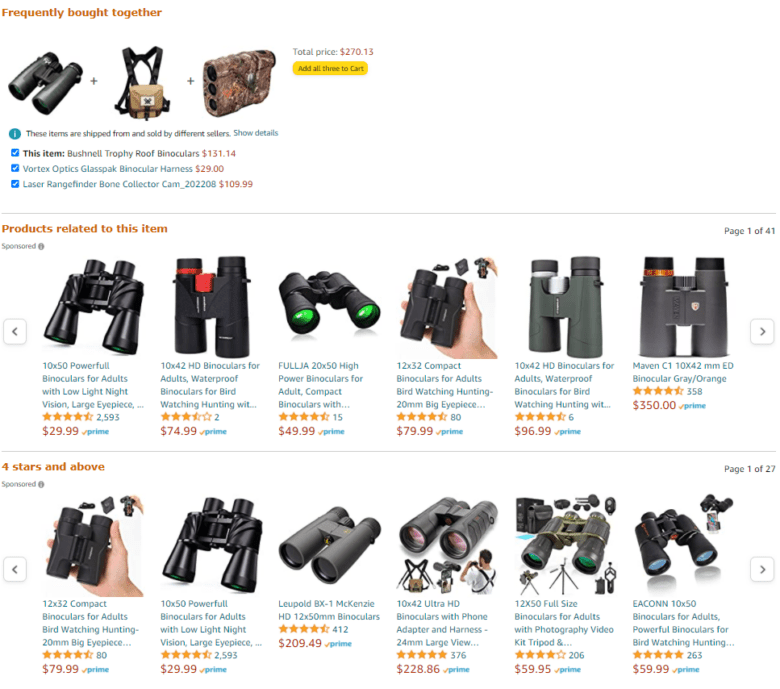
You can bet Amazon is constantly analyzing that data to see what performs best for certain offers — and then running those tests elsewhere on the site, too.
Want help running these kinds of tests on your site? Our CRO experts are here to help you improve your bottom line through a personalized conversion rate optimization strategy.
The Best Way to Increase Upsells & Crossells? Use Repetition
Now, let’s get into our case study.
Back in 2019, we were tasked with optimizing an upsell offer of trip protection for a client in the vacations vertical. By testing one simple change in the offer placement, we saw conversion rate increase by 3.3% and revenue increase by 4% per user.

How’d we do it? Through repetition.
Upsell and cross-sells need to overcome the customer’s objection of extra cost. We’ve found the easiest way to do so is by repeating those offers at multiple points in the sale.
Customers rarely want to spend more money on a purchase. But, if you keep highlighting a reason to spend more by repeating the offer, they’ll often relent and “add to cart.”
It’s a classic theory of repetition in advertising. Showing a product repeatedly keeps that product at the front of a customer’s mind — but, remember, it’s a fine line. Show the product one too many times, and your shoppers may get fatigued or irritated and leave your site without completing their purchase.
The only way to identify your site’s sweet spot? You guessed it: through testing.
Our Repetition Test
We used this principle of repetition to break down our client’s customer objections when it came to adding trip protection to their excursions.
First, we tested the offer on both the cart page and checkout page against placement only on the cart page:
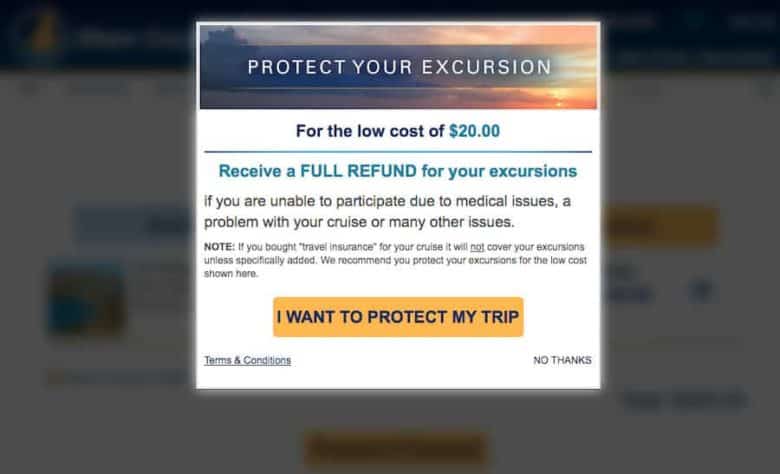
If the customer marked “No, Thanks” on the initial offer on the shopping cart page, they often converted better when they saw the upsell again on the checkout page — resulting in 3% more visitors opting for trip protection, increasing revenue by 4% per user.
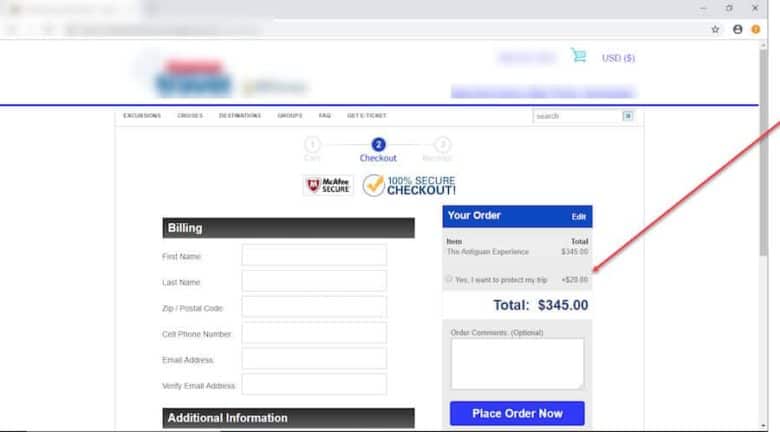
Note that the messaging for the repeated offer on checkout is much more subtle because:
- We’ve already communicated the details of what trip protection is.
- We don’t want to make the customer fearful about not being able to receive a refund and cause them to abandon the page.
Fear is driving this offer’s purchase. On the product page, we can be more aggressive toward that fear in our messaging by highlighting the potential loss as early as possible. But, at the end of checkout, we tone it down to avoid discouraging the purchase altogether.
The lesson: Present upsell offers at multiple points in the journey, and know how to best present those offers based on the buying stage the customer is at.
Learn more about running tests on your site the right way with Inflow’s eCommerce conversion testing eBook.
Test Repetition with Different Placements & Messaging
While optimizing the general checkout conversion rate is important, improving the conversion rate of upsell and cross-sell offers on every page in which they appear during the checkout flow can make a big revenue impact.
That’s why it’s about more than just repeating an offer; you need to test which page placements lead to the best results, too.
Just like our client, travel industry competitors place upsells at multiple points in the shopper’s journey. They’re most typically found on a product detail page, checkout, and in the shopping cart.
For example, when booking hotels with Travelocity, you’ll see one set of upsell options before you reserve the trip. You can pay a bit more to get “Free Cancellation” and “Reserve Now Pay Later.” You can also add on an additional upsell option that includes continental breakfast.
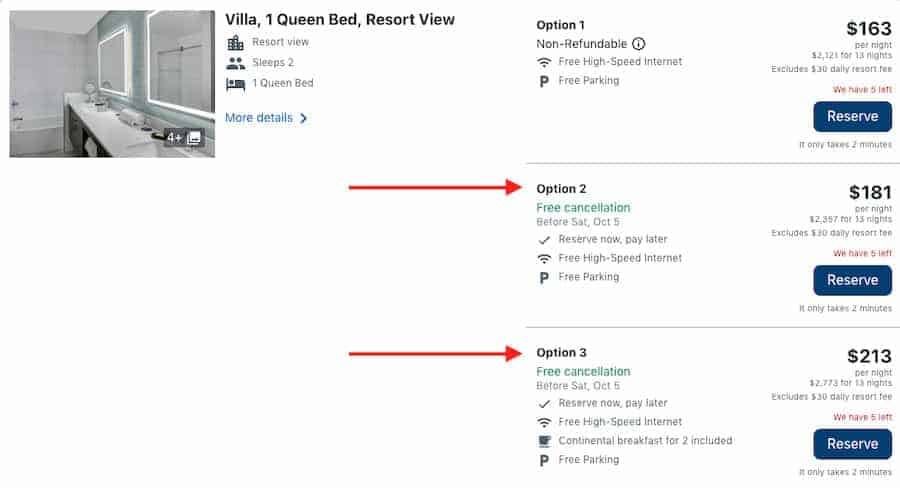
If you don’t opt-in to those offers on the product page, you’ll likely be shown a different offer for hotel protection on the checkout page. Here, Travelocity displays an offer more relevant to this particular stage of the buying cycle.
In this case, it’s to “Protect Your Hotel” once you click “Reserve”:
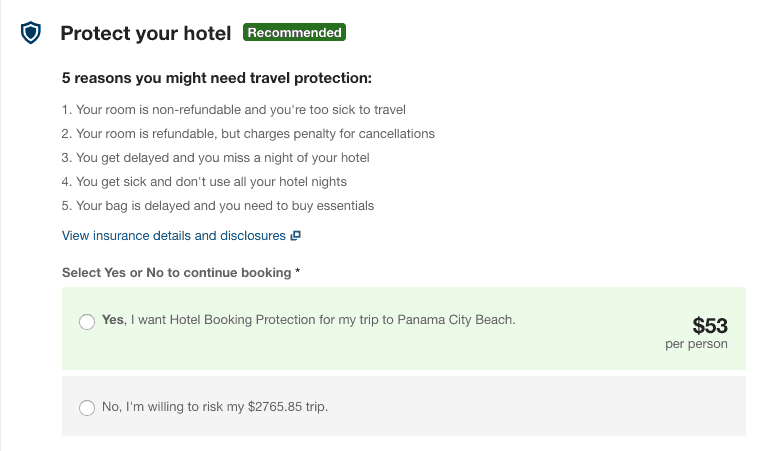
Remember how moderating fear-based upsell messaging is important? This Protection offer first offers a detailed explanation and the dollar amount at risk — but, if you click, “No, I’m willing to risk my $2765.85 trip,” the messaging is toned down with a more subtle “Reconsider” button, instead.

With fear-based upsells like these, you’ll get better results by adjusting how aggressively you present it, depending on the stage of the sale. The general rule: Talk about potential loss as early as possible; then, toward the end of checkout, moderate your tone. As the final checkout page appears and the customer enters their credit card information, present the offer once last time, minus the fear (ex: “Your trip is not protected.”).
What About Non-Fear-Motivated Upsells?
The test we ran in this case study regarding trip protection may not be directly relevant to your store — but there are still other eCommerce upsell best practices that you can use, too.
Remember: The offers you present and how you present them depends on multiple factors, including your target audience’s tendencies, your store’s user interface, and the products you sell.
Example 1: The Aggressive Upsell
We’ll give you an example of aggressive upselling that works well from our former client Carcovers.com.
This client knows that its audience is on its site to buy accessories for their cars. If they’re willing to buy a car cover, what other car accessories could they “add to cart” along the way?
CarCovers.com’s interface offers multiple upsells and cross-sells on the same page, using the phrases:
- “You may be interested in the following products”
- “See more items you may be interested in”
- “Add selected items to cart”
This offer appears after a customer clicks “add to cart”:
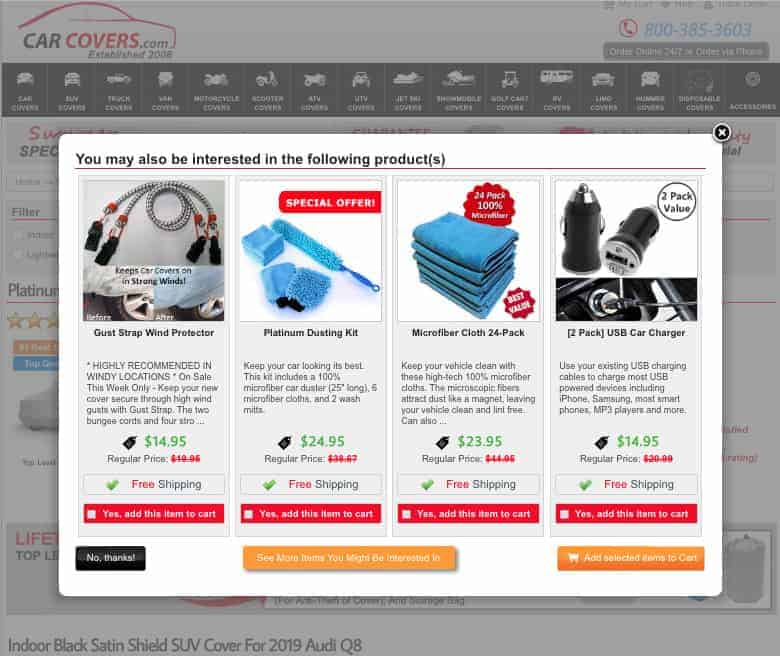
Later on in the checkout process, the site tones down (but still offers) these upsells:
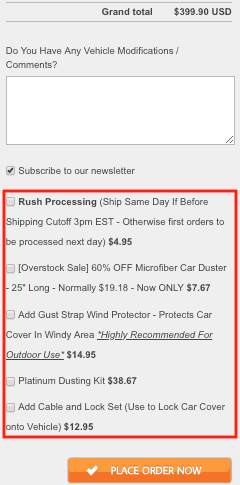
Is this too aggressive? Too many different product options? While it is a bit in your face, the offers do end up converting better than other tests we ran — or CarCovers.com wouldn’t use them.
Don’t assume you’ll irritate customers by being aggressive with your offers. Test one offer, then add another and see what changes.
Again, optimization depends on your store, industry, products, and customers (and, of course, the offers themselves).
Example 2: The Extended Upsell
As a final example, let’s take a quick look at the interface at eBags.com. This site includes even more instances of upsells and cross-sells than CarCovers.com.
Yet, eBags seems to strike a happy medium in their design. They’re aggressive, but not too aggressive, by placing offers below-the-fold in the product page design.
On the product detail on the desktop, you don’t initially see these offers:
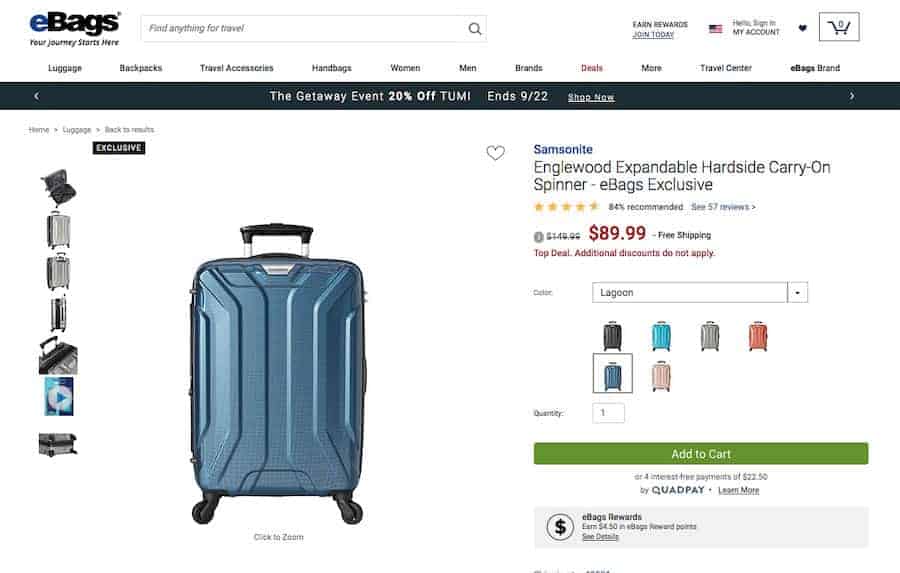
Until you scroll down…
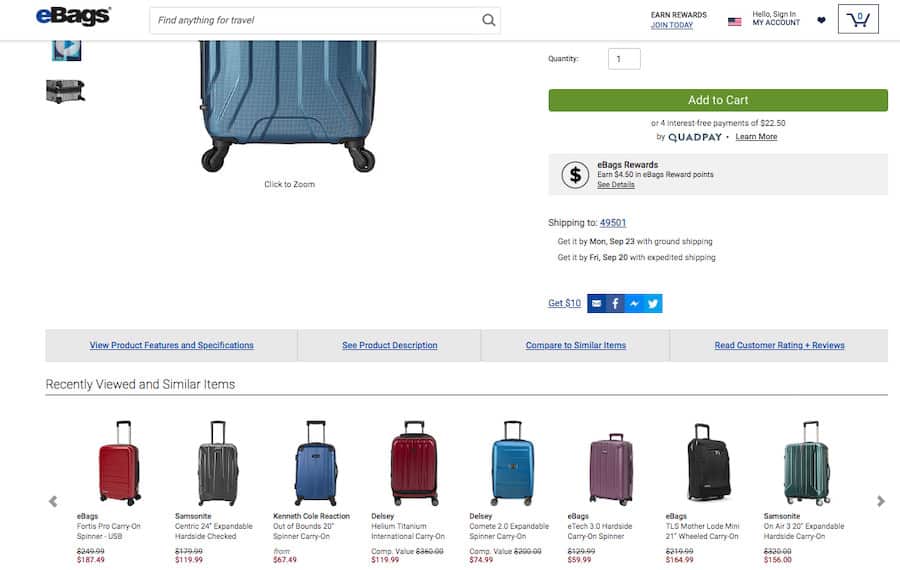
Then, you really see them.
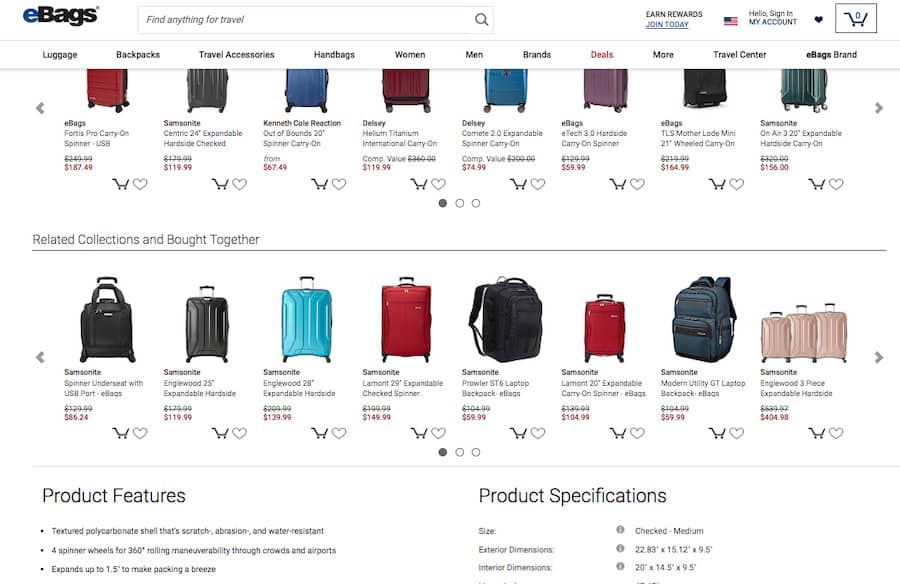
The farther you scroll, the more recommended products you see:
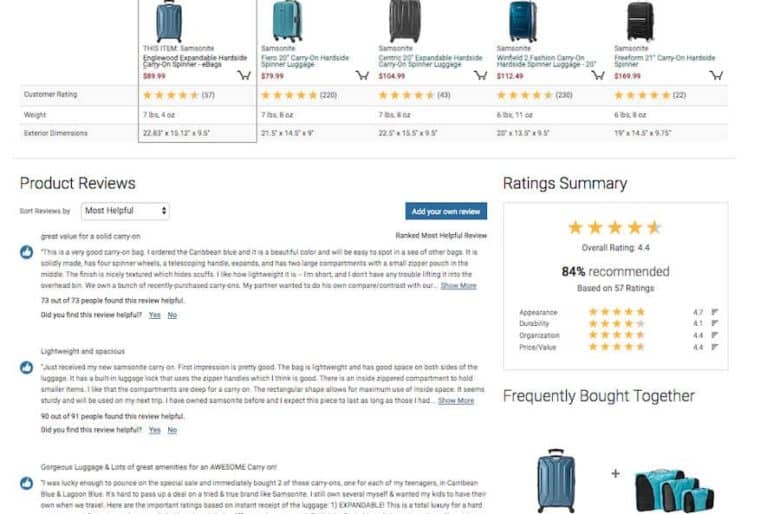
The logic here? If the user was already sold on the luggage, they would have clicked add to cart right away at the top of the page. But, if they’re unsure of the product, they’ll scroll down to read more. Of course, as they read, eBags shows additional products to consider and keep the browser engaged in the shopping and customer experience.
Of course, eBags doesn’t stop recommending upsells and cross-sells once you do add a product of theirs to your cart:
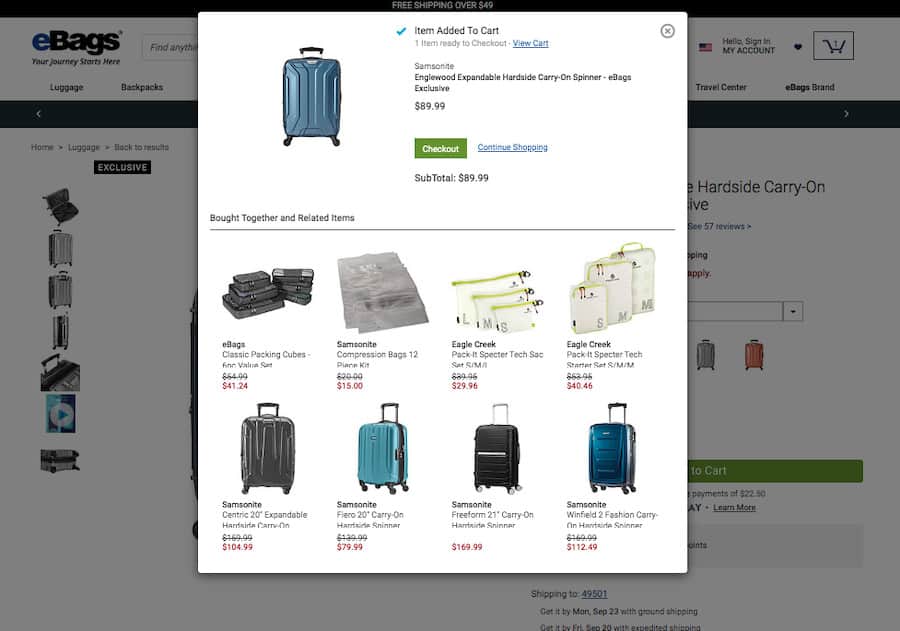
They’ll upsell you one more time before the checkout process, too:
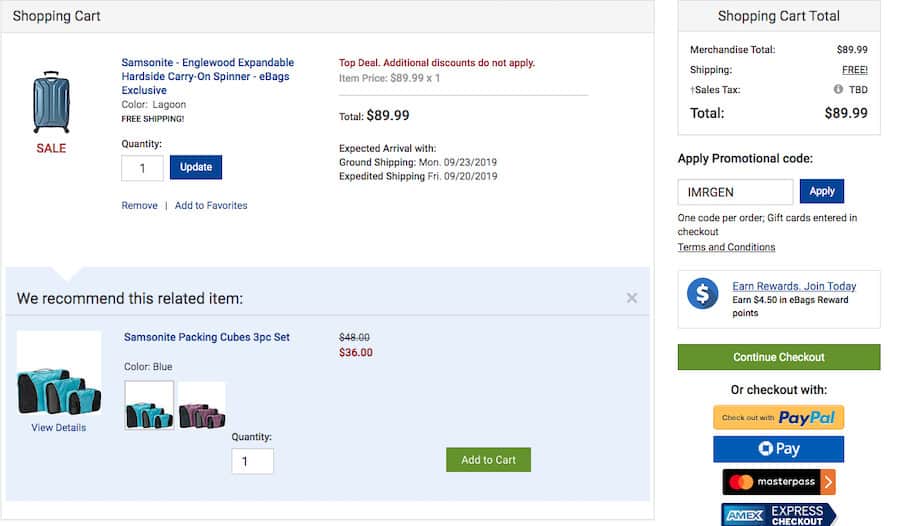
Again, is it too much? If it was, as a member of our Best-In-Class eCommerce stores, eBags wouldn’t be doing it!
Like many other eCommerce stores, eBags takes advantage of the fact that customers are used to seeing related products when they shop. The result? More customers bundling in other products they’re offered with the click of a button.
The takeaway: Be aggressive with repeated upsell offers. Customers are used to seeing them when shopping online, and a significant portion even value the similar products offers enough to add those similar products to their cart!
Our Recommendations for Testing Upsells on Your Site
If this guide taught you anything, we hope you now have a more nuanced understanding of conversion rate optimization as it applies to upselling and cross-selling. One is not “better” than the other; each plays an important role in increasing AOV and revenue for your eCommerce site.
In conclusion, our proven strategies for incorporating eCommerce upsells and cross-sells are:
- Repeat these offers throughout your store’s interface
- Test placement to optimize conversion (we recommend adding one offer of additional products at a time, testing at each interval)
- Keep adding product upsell and cross-sell offers to your store, both in terms of products and placements, as long as it continues to increase your AOV
Add the above to your marketing efforts, and get ready to watch your numbers climb.
Want an expert to do it for you? Work with our team of conversion rate optimization specialists to uncover the best upsell and cross-sell opportunities on your site. Get started by requesting a free proposal today.
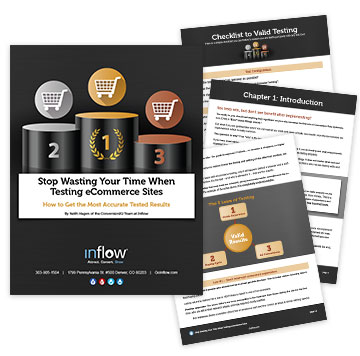











0 Comments